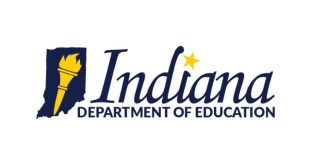Washington, D.C.— Today, Congressman Jim Banks (R-IN) and Senator Mike Braun (R-IN) introduced companion versions of the Pell Flexibility Act of 2019 in both the House of Representatives and Senate. The legislation would reform the Pell Grant program to allow for grants to be used by students in skills-based programs, in order to address the widening skills gap in America. Read the full bill text here.
Said Rep. Banks, “There are currently 100,000 jobs in Indiana that are unfilled due to a worker shortage in technical and skilled fields. We need to do more to equip students with the knowledge and training they need to find a job after graduation, and that begins with restructuring federal grant money to prioritize highly demanded skills. Pell Grant flexibility is a common-sense step in the right direction, and is a top priority of our Governor, Eric Holcomb.”
Said Sen. Braun,“As a business owner who has hired hundreds in my career, I know first-hand there is a workforce skills gap. This legislation will address that crisis, improve job placement and reduce student debt by prioritizing skills-based programs.”
Reps. Kevin Hern (R-OK) and Bob Gibbs (R-OH) are also House cosponsors of the Pell Flexibility Act of 2019.
Said Rep. Hern, “Thanks to pro-growth policies, our economy is booming, stimulating hundreds of thousands of new jobs every month. With expansive job creation comes the side effect of 6 million unfilled skilled jobs. These jobs require technical training and specific certifications. The Pell Flexibility Act aims to fill the workforce shortage and address the skills gap. This pilot program will give students the flexibility to use Pell Grant funds for technical training, gaining the experience and certifications needed to enter the workforce and be successful in skilled fields.”
Said Rep. Gibbs, “Despite our resurgent national economy and low unemployment, many regions face skills gaps that affect the local workforce. With increased need for skilled and trade labor, federal education policy has not kept up with these changes in diverse local economies. The Pell Flexibility Act gives the opportunity for higher education to partner with local employers to match the job skills needed with funding for the appropriate program. By expanding the programs eligible for Pell Grants, local business and education leaders are in the driver’s seat to boost workforce development and ensure those seeking in-demand skills training can receive it. I am proud to co-sponsor the Pell Flexibility Act.”
Background
- To improve job placement, reduce the crushing burden of student loan debt, and address the crisis of the workforce skills gap, higher education must adapt to meet the needs of employers. Federal grants prioritizing skills-based programs is a critical step in that direction.
- Under Title IV of the Higher Education Act of 1965, as amended, institutions of higher education are eligible to participate in federal student aid programs—the foundational program of this system being the federal Pell Grant.
- Under the Pilot program created by the Pell Flexibility Act, Title IV-eligible institutions with programs between 320-600 hours in length would apply to the U.S. Department of Education (ED) to participation in the program, with a limit of eight programs at each institution eligible to participate.
- Institutions must demonstrate that their program(s) addresses the skills gap by using evaluations from the Bureau of Labor and Statistics Office of Employment Projections; local and regional workforce needs assessments created under recent updates to Title V of the Carl D. Perkins Career and Technical Education Act; Workforce Investment Boards; or other state agencies.
- The program will be monitored and evaluated by ED and a report will be issued to relevant Congressional committees using both qualitative and quantities evidence. The report must include how these programs meet workforce needs, retention rates, job placement rates in relevant fields, and other pertinent information.





